Yabuhara: Hidden Portal to the Nakasendo Trail

I’m willing to bet all the money in your backpack that Yabuhara is not on your itinerary. Not that you should be penalized for it. Though Yabuhara was one of the sixty-nine post towns along the Nakasendo, one of the two Edo Era routes connecting Kyoto with the capital city, it hardly has the mojo to rank alongside heavily-trafficked Tsumago and Magome. At a glance it doesn’t look like an historic post town, or an historic anything for that matter.
So you’re right to wonder (and I know you are) why I’m even talking about it.
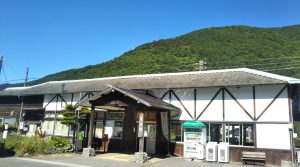
“I wanna get off the beaten path” say so many backpackers and tourist-travelers. “I wanna experience the *real* Japan.” And I get that. I’ve lived it. It’s why I’ve cycled hundreds of miles with a pack on my back and a tent strapped to my rear rack.
That said, I’ll bet you all the food in your backpack (since I’ve already taken your money) that you didn’t bring your bicycle to Japan. Which brings us back to Yabuhara.
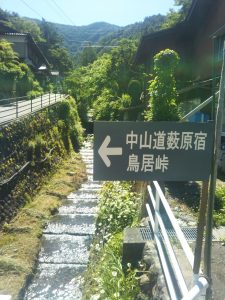
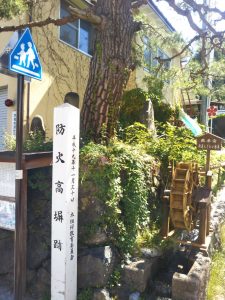
Small, sleepy, and just an hour south of Matsumoto (give or take, depending on your train), Yabuhara floats somewhere between historic and forgotten. Most of the physical history is gone, marked now only by sign posts and vertical Japanese explanations. If it weren’t a part of the Nakasendo, Yabuhara would most certainly be destined for anonymity. But this in-between town has its subtle charms.
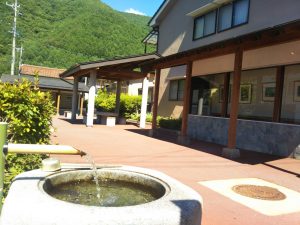
You might sense the fledgling, ambitious rejuvenation of the town as you walk the streets. There are remnants of the Japan of old, in the facades of wooden buildings here and there.
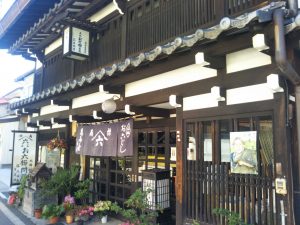
And near the north end of town you’ll find a doorway to the storied Nakasendo, your portal to a hike along the centuries-old path of the daimyo and the pilgrims of Edo.
This path leads through the woods and high into the hills; over Torii Pass, the highest point along the entire 534-kilometer route from Kyoto to Tokyo; and down to the underrated post town of Narai-juku. Walking this path from Yabuhara to Narai is why I went to Yabuhara in the first place – and, quite frankly, is really what tips the scales in favor of adding Yabuhara to your Matsumoto itinerary.
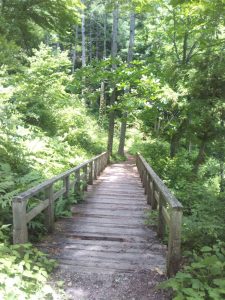
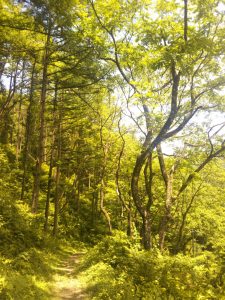
Only one other person got off my train at Yabuhara. No one got on. That one other person soon disappeared – and there I was, utterly alone, in a place that felt very far from the beaten path. It felt good (albeit a bit odd without my bike).
There’s a map of the area posted off to the side of the station building, but I found it less than helpful in finding my way. Only later did I come across this hand-drawn scheme of the town, which is much more user-friendly (particularly if the user can read Japanese).
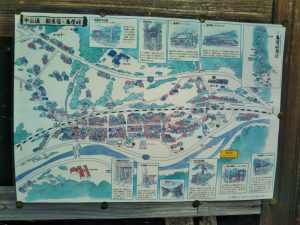
Yabuhara Station sits near the south end of town. (It’s #1 on the map, marked with a helpful ‘JR’.) The stretch of the Nakasendo leading to Narai, meanwhile, is up at the north end of town. So like it or not, you’re in for a self-guided walking tour of Yabuhara.
Welcome to off the beaten path.
The red-dotted route on the map takes you past such sites as the Kosatsuba-ato (#3), the place where a signboard once held pronouncements and directives from the government of the Tokugawa Shogunate. #4 on the map indicates the remains of a stone wall that was part of an effort to prevent a recurrence of a massive fire that devoured the town in the late 17th Century. #8 shows the former location of Yabuhara’s Honjin, where traveling daimyo and nobility would stay overnight on their way to or from Edo. #9 marks the spot where the Nakasendo split, with the offshoot leading up over Nomugi Pass and down to Hida-Takayama.
Besides these points of historical significance, Yabuhara presents as a place of shy but friendly people who would love for you to stop in for a cup of tea or a plate of soba. If you feel tempted to extend your stroll through town, it might be nice to know that the leisurely hike from here to Narai, where you might also want to spend some time, likely won’t take more than three hours.
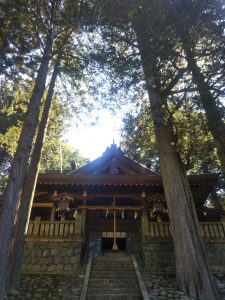
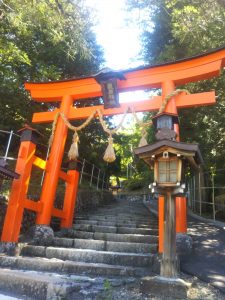
Before you head out of Yabuhara, up the steep road past #9 & 10 on the map, cut over toward #6 for a visit to Yabuhara Shrine. The wooded serenity may not be particularly unique, but is worth taking in all the same. Next door, Gokuraku-ji Temple (#5) offers more attractive quietude as well as a second opportunity to pray for your safety as you head off into the woods.
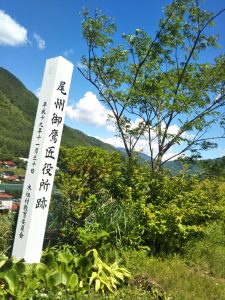
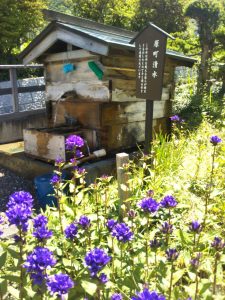
But fear not, for the road is tame and, for the most part, well-marked. Along the way you’ll find an old tea house, which quite frankly looks more like a sheltered bus stop. There’s a sign memorializing a bloodbath of a battle that took place here in February of 1582. Sitting above a curious web of trails that all eventually converge (except for one, which leads to a weather monitoring station) to continue on toward Torii Pass is a shrine that on its face looks more like a big shed. The stone gate and the various stone statues surrounding it are much more interesting.
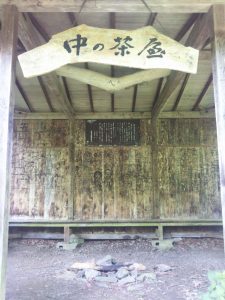
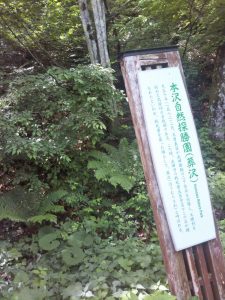
Torii Pass, the highest point along the Nakasendo, is easy to miss. There’s no torii. There’s no sign or stone marker. There’s not even a vending machine. You’ll only know you passed it because you ‘ll suddenly be going downhill.
At the end of the hike is, of course, your reward for making the trip. Narai-juku is a neat and well-preserved post town, perhaps not quite comparable to Tsumago or Magome in terms of size and scope but consequently not nearly as visited.

And unlike those twin tourist magnets of Tsumago and Magome, Narai, like Yabuhara, has a train station right there on the edge of town. Trains don’t stop with any alarming frequency here or in Yabuhara, so check your train times in advance. Then take your time taking in the path less beaten.
Some helpful Kanji for your trip:
藪原 – Yabuhara
中山道 – Nakasendo
鳥居峠 – Torii Pass
奈良井宿 – Narai-juku
塩尻 – Shiojiri (where you might have to change trains on your way from Matsumoto to Yabuhara. You want a train heading for Nagoya, not Tokyo.)
NOTE: Hiking from Narai to Yabuhara is certainly possible, and perhaps even preferable in terms of finding the path, which is a bit easier to do at the Narai end. But there’s more to see in Narai – something to consider if you end up with lots of time to fill before the next train bound for Matsumoto finally rolls on through.